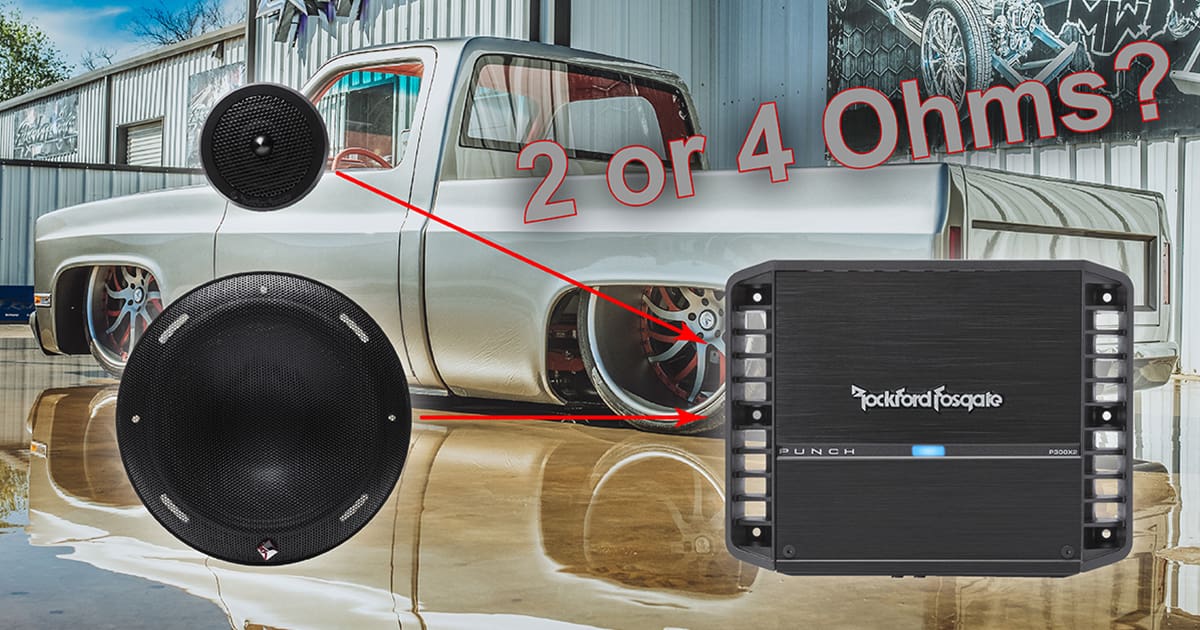The concept of how car audio amplifiers distribute power to multiple speakers connected to the same channel seems simple. A little math with Ohm’s law and looking at the amplifier’s specifications should tell the tale, right? Yes and no. Things get more complicated when crossovers are involved. Don’t fret; we’re here to make everything easy to understand. Let’s dive in!
What Determines How Much Power an Amplifier Produces?
The first thing we need to understand is how amplifiers produce power. In almost all cases, car audio amplifiers increase the voltage of the incoming signal by a specific amount. The amount of increase in amplitude is called gain. Engineers specify gain in decibels. Depending on the amplifier’s sensitivity control setting, the gain might be as low as 5 or 6 dB for a small amp or 40 dB for something significant.
More gain isn’t better. That can lead to more unwanted noise added to the signal. Every source unit and amplifier combination has an ideal gain configuration that produces maximum power with as little noise as possible. More commonly, the correct gain setting ensures that the speakers connected to the amp blend smoothly with the rest of the system.
As mentioned, amplifiers increase voltage. Feeding a 1-volt signal from your radio into an amplifier might increase that by 10 dB to 10 volts. That voltage goes to the speaker connected to the amplifier. If the speaker has a nominal impedance of 4 ohms, you can use Ohm’s law to calculate how much current will flow through the speaker. We can calculate current by dividing the output voltage by the load (speaker) resistance. In this configuration, 10 divided by four is 2.5 amps.
You can also calculate how much power the speaker gets. To calculate power with voltage and resistance values, square the voltage and then divide that by the resistance. In this example, 10 squared is 100. One hundred divided by four is 25. So, 10 volts applied to a 4-ohm speaker results in the speaker getting 25 watts of power. Another option is to multiply current by voltage to calculate power. In this example, we have 10 volts and 2.5 amps of current, which equals 25 watts.
With a lower impedance speaker, as you might find with a subwoofer configuration, the amplifier’s power production increases because more current flows through the voice coil. Interestingly, this happens without any adjustment in gain settings. Let’s run the same math with a 2-ohm speaker. The speaker will have 5 amps of current flowing through it (10 volts divided by 2 ohms) and will get 50 watts of power (10 squared divided by two).
We can change the impedance an amplifier sees in several ways. A single 4-ohm speaker will, of course, present a 4-ohm load. Two 4-ohm speakers wired in parallel present a 2-ohm load. Read this if you need a reminder about parallel wiring. You could wire two 2-ohm speakers in series to get a 4-ohm load. You could wire four 1-ohm speakers in series to get 4 ohms. There are some performance-related drawbacks to wiring speakers in series. Primarily, the inductance values add and can dramatically affect midrange performance. It’s best to avoid series wiring when possible.
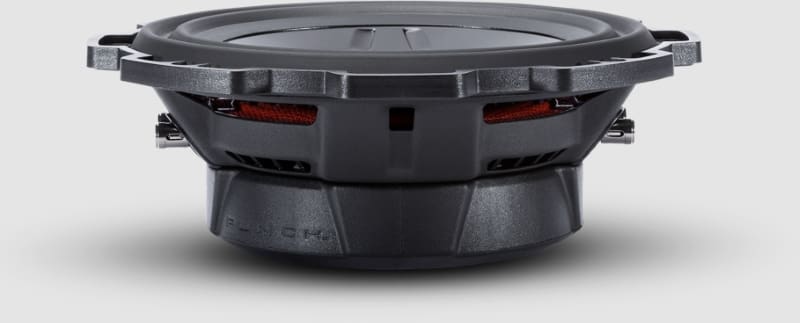
How Passive Crossovers Affect Amplifier Power Production
So far, this has all been relatively simple. However, we’ve assumed that our speakers act as a fixed-value load of 4 or 2 ohms. The reality is that they aren’t. Because audio signals are alternating current waveforms, and our speakers have characteristics like resonance and inductance, the impedance the amplifier sees varies with frequency.
Impedance is the term used to describe the opposite of current flow in a circuit with alternating current. It’s similar in concept to resistance but much more complicated to calculate and manipulate, as phase is also an issue.
The graph below shows the impedance of a 6.5-inch component speaker set with different settings on the passive crossover network.
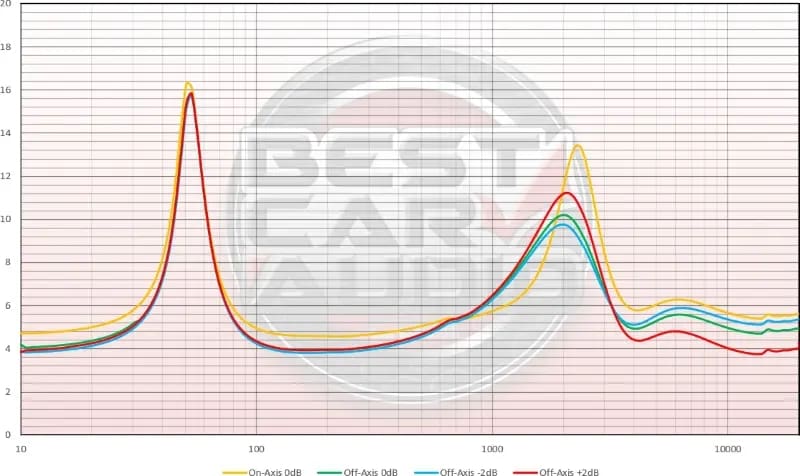
The first thing to notice from the graph above is the spike at just over 60 Hz. This spike represents the resonant frequency of the woofer in the speaker system. The impedance at the resonance peak is close to 16 ohms. The amplifier produces much less power at this frequency, but the speaker becomes more efficient. Resonance implies that a small amount of energy produces significantly more output. If the speaker is well-designed, which is the case with the Rockford Fosgate T3652S woofer, the frequency response around the resonant frequency will match that of the higher frequencies.
The other bump in the impedance graph is around the crossover point between the tweeter and woofer. This impedance rise likely results from underlapping the woofer and tweeter crossover points. Ultimately, the system measures well in this area. This impedance bump is of no concern so long as the amplifier you have chosen has excellent output voltage stability in terms of load impedance.
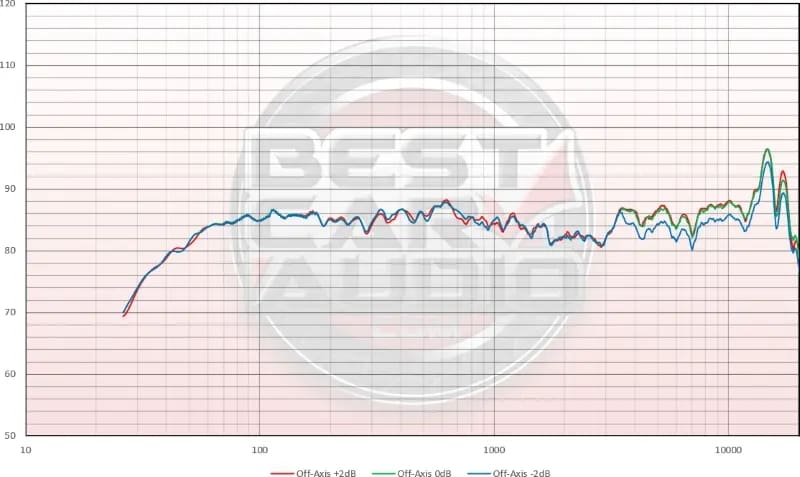
Passive Crossovers and Amplifier Power Production
Now, it’s time to introduce alternating current signals and passive crossovers.
The purpose of crossovers is to limit the frequency range where a speaker plays sound. A low-pass crossover allows a speaker to play up to a chosen frequency. To remember how they work, keep this in mind: A low-pass filter passes audio frequencies lower than the crossover point. Above that frequency, the speaker produces less sound as you move farther from the crossover point. We use low-pass crossovers on subwoofers as we don’t want them playing midbass or midrange frequencies. A low-pass crossover on a midrange driver attenuates output where the tweeter takes over.
The other type of crossover is called a high-pass. This type of filter blocks low-frequency sounds. We use high-pass crossovers on midrange drivers and tweeters. An infrasonic filter, often mistakenly called a subsonic filter, is also a high-pass filter. These filters work the same way in attenuating output as you move away from the crossover point. Here’s how to remember how high-pass filters work: A high-pass filter passes audio frequencies higher than the crossover point.
In both cases, crossovers are not a brick wall. They don’t stop all information above or below the crossover frequency. The rate at which the sound gets quieter is called the crossover slope. For this article, we’ll talk about simple first-order -6 dB/octave passive crossovers. In real-world applications, these filters aren’t steep enough (don’t attenuate fast enough) to provide adequate filtering. Nevertheless, they are perfect for explaining power distribution when we connect multiple speakers to an amplifier.
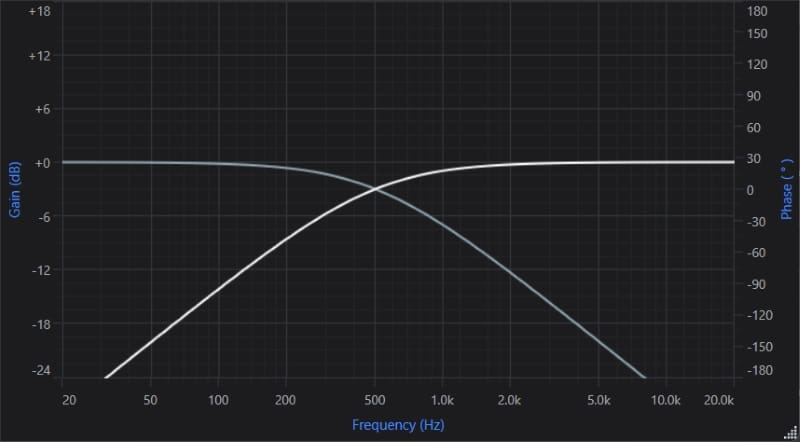
The response graph above is a screenshot from the ARC Audio ARC DNA DSP software suite’s Graph option. These high- and low-pass crossovers are set to 500 Hz to make them easy to see.
How Passive Crossover Components Reduce Speaker Output
To add crossovers to speakers, a technician will wire a non-polarized electrolytic or a mylar foil capacitor in series to create a high-pass filter. An inductor in series with a speaker creates a low-pass filter. It doesn’t matter if the capacitors or inductors are on the positive or negative lead to the speaker.
We aren’t going to go into the math of how capacitors and inductors act as crossovers in this article. We covered capacitors here and inductors here. Consider these articles prerequisites if you want a detailed understanding of how these devices function. In short, the caps and coils increase their impedance at and beyond the crossover point.
The graph below shows the impedance of a 4-ohm speaker wired in series with a capacitor and a second speaker wired in series with an inductor.

We chose the values for the capacitor and inductor in the graph so that the crossover point is at 500 Hz. At this frequency, the impedance of the passive filters is the same as the speaker impedance or 4 ohms. The result is that the amplifier “sees” an impedance of 8 ohms and produces half as much power as it would without the capacitor in the circuit.
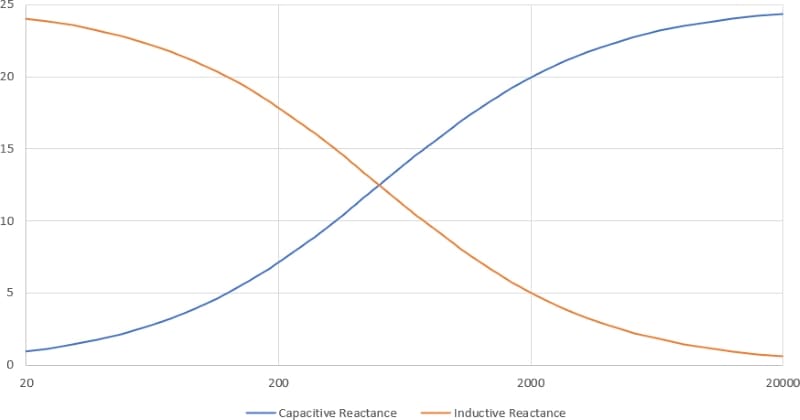
This second graph shows the power the amplifier produces for each speaker network based on the load impedance. You can see that the amplifier delivers 12.5 watts into both at the crossover point of 500 Hz. If we sum the power into each speaker, the amplifier still produces 25 watts.
A properly designed passive crossover network performs two tasks: Primarily, it serves as an acoustic filter between two speakers. The most common application in car audio systems is attenuating the output of a midrange speaker or woofer where a tweeter starts playing. The same network would include a high-pass filter so the tweeter wouldn’t play low-frequency information. The second task is to prevent an amplifier from seeing the impedance of two speakers at once. Some companies don’t execute this second criterion well, resulting in upset amplifiers and difficulty with system design.
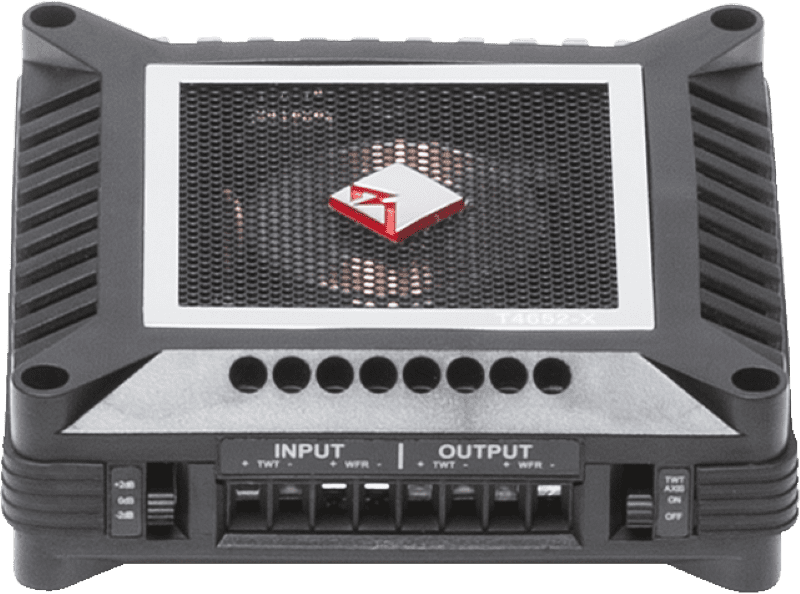
Amplifier Power Distribution Takeaways
The inspiration for this article on speaker power distribution stemmed from a discussion about how much power an amplifier produces when driving a midrange speaker and a tweeter. Many people mistakenly thought that since the woofer and the tweeter have a nominal impedance of 4 ohms, the amp would see them as a 2-ohm load. Without crossovers, this assumption would be correct. However, the tweeter wouldn’t last long without a crossover to protect it from being over-powered and over-driven.
If you aren’t sure how power will be distributed among the many speakers connected to your car audio system, drop by a local speciality mobile enhancement retailer. They can help design, install, configure and calibrate a sound system you’ll enjoy!
